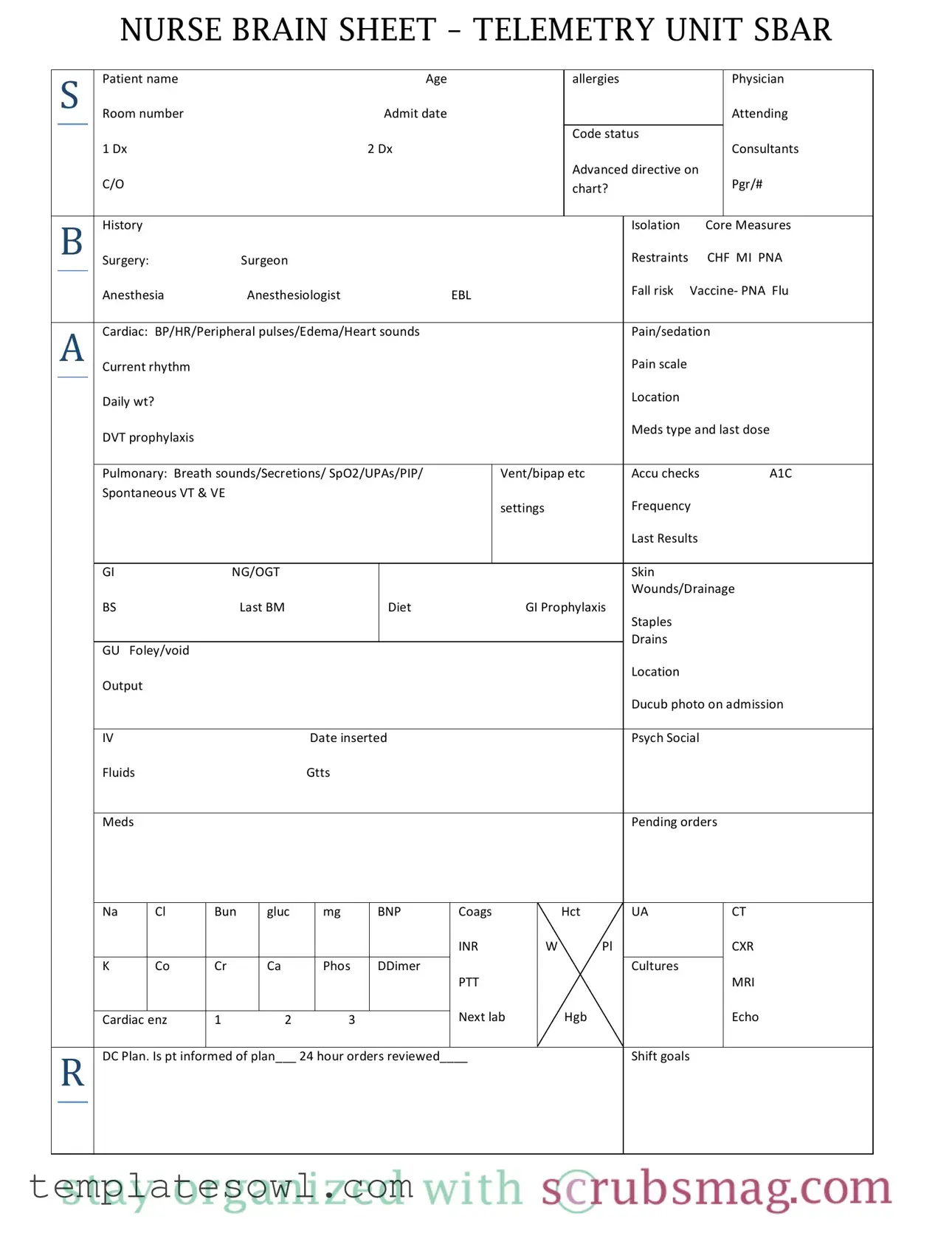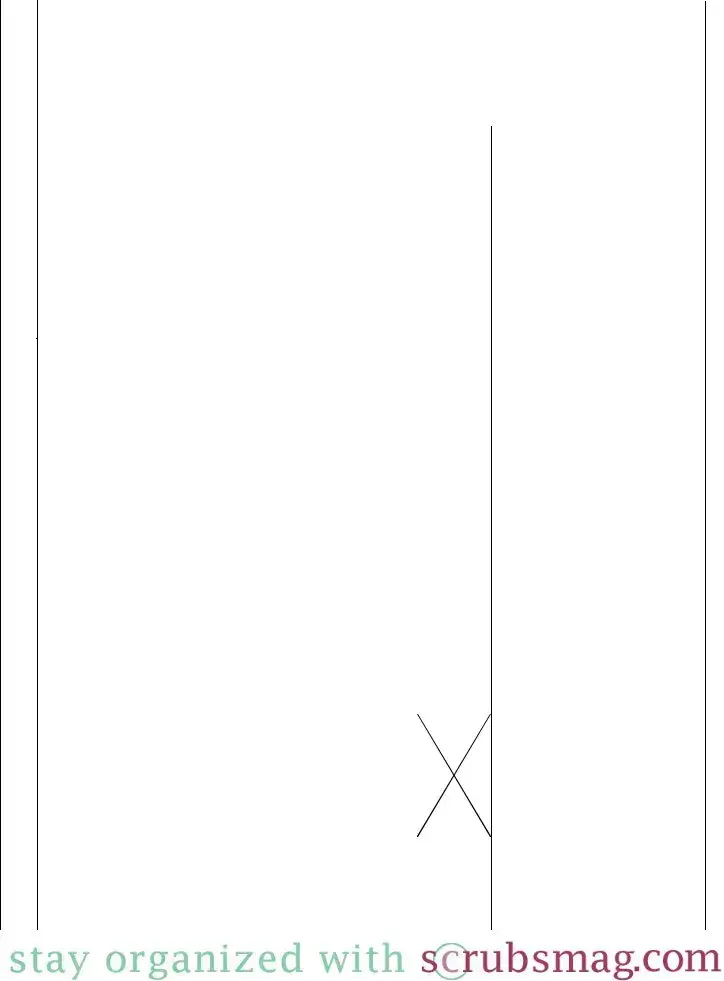What is the purpose of the Sheet Telemetry form?
The Sheet Telemetry form is designed to provide healthcare professionals with a comprehensive overview of a patient's status in a telemetry unit. It fosters effective communication among caregivers and ensures that critical patient information is documented in one easily accessible location. This form includes vital details such as patient demographics, clinical history, vital signs, medications, and specific care protocols necessary for monitoring patients with cardiac conditions.
Who should complete the Sheet Telemetry form?
The Sheet Telemetry form should be completed by nursing staff, specifically those assigned to the telemetry unit. Nurses or other healthcare providers are responsible for documenting initial assessments upon patient admission and updating the form throughout the patient's stay. This ongoing documentation reflects changes in the patient’s condition and care plan, ensuring that all team members are informed and able to make timely decisions.
What key information is included in the Sheet Telemetry form?
The form includes several key sections: patient identification (name, age, physician, and room number), medical history (including diagnoses, allergies, and advanced directives), clinical assessments (such as vital signs, cardiac rhythm, and pain management), and laboratory test results. It also includes information regarding daily weight, medication administration, and any pending orders that need attention.
How often should the Sheet Telemetry form be updated?
The Sheet Telemetry form must be updated regularly to reflect the patient's current condition. Significant changes, such as modifications to medications, vital signs, or laboratory results, should be documented immediately. In addition, routine updates should occur at the beginning of each shift to review the patient's status and ensure that all healthcare team members are aware of the latest developments in the patient's care plan.
What is the significance of the SBAR communication model in the Sheet Telemetry form?
The SBAR model, which stands for Situation, Background, Assessment, and Recommendation, is a structured approach to communication that improves clarity and efficiency. Within the context of the Sheet Telemetry form, SBAR facilitates concise and effective information sharing among team members. This approach ensures that critical information is communicated quickly, improving patient safety and enabling timely interventions based on the presented patient data.

